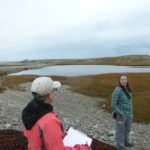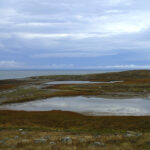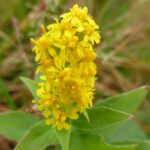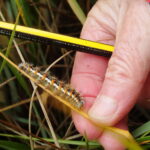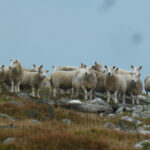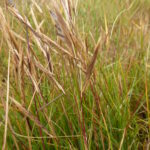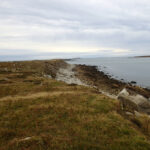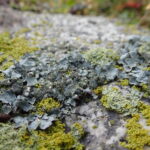Peases Island, in Perpetuity
29 Apr 2020
Written by Joanna Skomorowski, Land Stewardship Assistant
Peases Island is a scrap of land amidst the scattered islands that make up the Tusket Islands. Located six kilometers off of mainland Nova Scotia, it borders one of the main passages through the Tusket Islands, an area with strong currents and rip tides. Getting there requires a boat and someone who knows the safe channels to use. It also requires a second, smaller boat (or tender) to make it to the shore, because the old slip on the island has rotted away, making it necessary to land on the beach.
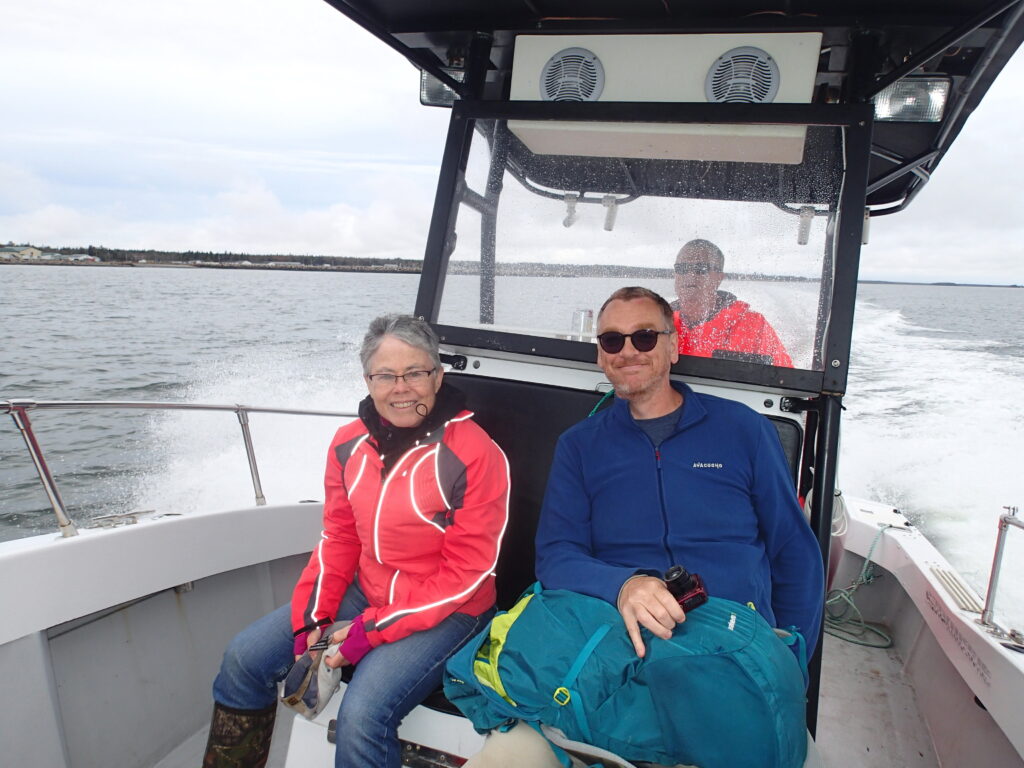
Mary & David en route to Peases Island. Thanks to Tusket Island Tours for transporting us to and from the island.
Using a tender, however, requires someone who knows how to row, which we had in our friend and volunteer, Mary Guptill. Mary donated La Grande Île, a lovely island rimmed with endangered Sweet Pepperbush, to the Nature Trust in 2018. In a fortunate coincidence, Mary also knows how to row from her mackerel fishing trips.
Mary, David Hodd (the Nature Trust’s Land Stewardship Manager) and I spent half a day on Peases Island in October, documenting the vegetation, the human impacts on the island over the years, and the surprising number of birds that were still there despite the lateness of the season. This baseline survey will provide the foundation for developing a stewardship plan for how we’re going to care for our new property in perpetuity. We use these surveys to thoroughly investigate and describe what is on a property when we acquire it, including biological, physical, and cultural features as well as natural and/or structural hazards present and a photo record of what the property looked like when we acquired it. This process allows us to identify the important conservation features on a new property and the threats to those features.
While part of me was busily taking photos and listing plants, the rest of me was looking around in wonder. I often visit beautiful places as a part of my work, but this one caught hold of me and refused to let go. Peases Island presented a windswept landscape scented with bayberry and coloured with a dulled palette of greys, greens and blues that, instead of dimming the beauty of the island, somehow added to it. Lichens coated the granite glacial erratics that dot the island, adding yellow-orange and purple to the colour scheme. The skies stretched in every direction, the horizon dotted by other islands of the Tuskets, and the wind buffeted me as I stood on the edge of a crumbling drumlin and marvelled at the beauty of it all. There is a sense of barrenness on the landscape in October, but also of peace. It seems especially appealing now, as I work from home and long for the wide-open spaces that are not open to any of us right now.
Records of Peases Island from the 1950s show that it was once forested, but now there are no signs of the coastal forest that once grew there. We do not know what happened to it, but it was likely cut for firewood by those that lived there. The plants are a mix of native and introduced species, which were brought there with the sheep and the humans who tended them and the lighthouse, a version of which still stands near the southern end of the island. A small flock of sheep still inhabit the island, and they eyed us warily as we went about our fieldwork.
The quiet of October belied what this island can sound like in June and July. Peases Island is home to colonies of Common and Arctic Terns, Herring Gulls and Black Guillemots, and in breeding season the air rings with their cries as they nest colonially and squabble with each other. There is an incredibly rich variety of birds that use this island as home, nest here or winter offshore.
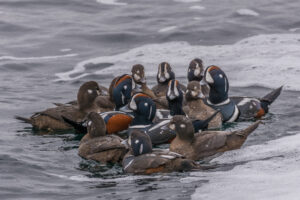
Harlequin Ducks (Credit: Jason Dain)
Brightly coloured Harlequin Ducks bob casually offshore during the winter in water so rough that it would swamp most ducks, and in 2018 at least one pair of endangered Roseate Terns nested alongside the rest of the terns, giving hope that they will come to nest there again in the future. In the late summer and fall, shorebirds crowd the salt marsh mud flats, including uncommon species such as Hudsonian Godwits and American Golden-Plovers. As the year cycles from season to season, the species that use the island change, but its ecological value remains.
The Nature Trust protected this island because of the incredible richness of the species that use it. We will care for it to the best of our abilities from now until forever, in hopes of seeing it flourish. We want to hear the air full of raucous terns and to see Black Guillemots ferrying beakfulls of sand eels to nestlings and Bank Swallows joyfully darting through the sky. I hope to see all of those things in person someday, when the pandemic restrictions lift. For now, I content myself with memories of the open skies, rich quiet and muted colours of Peases Island in October.

